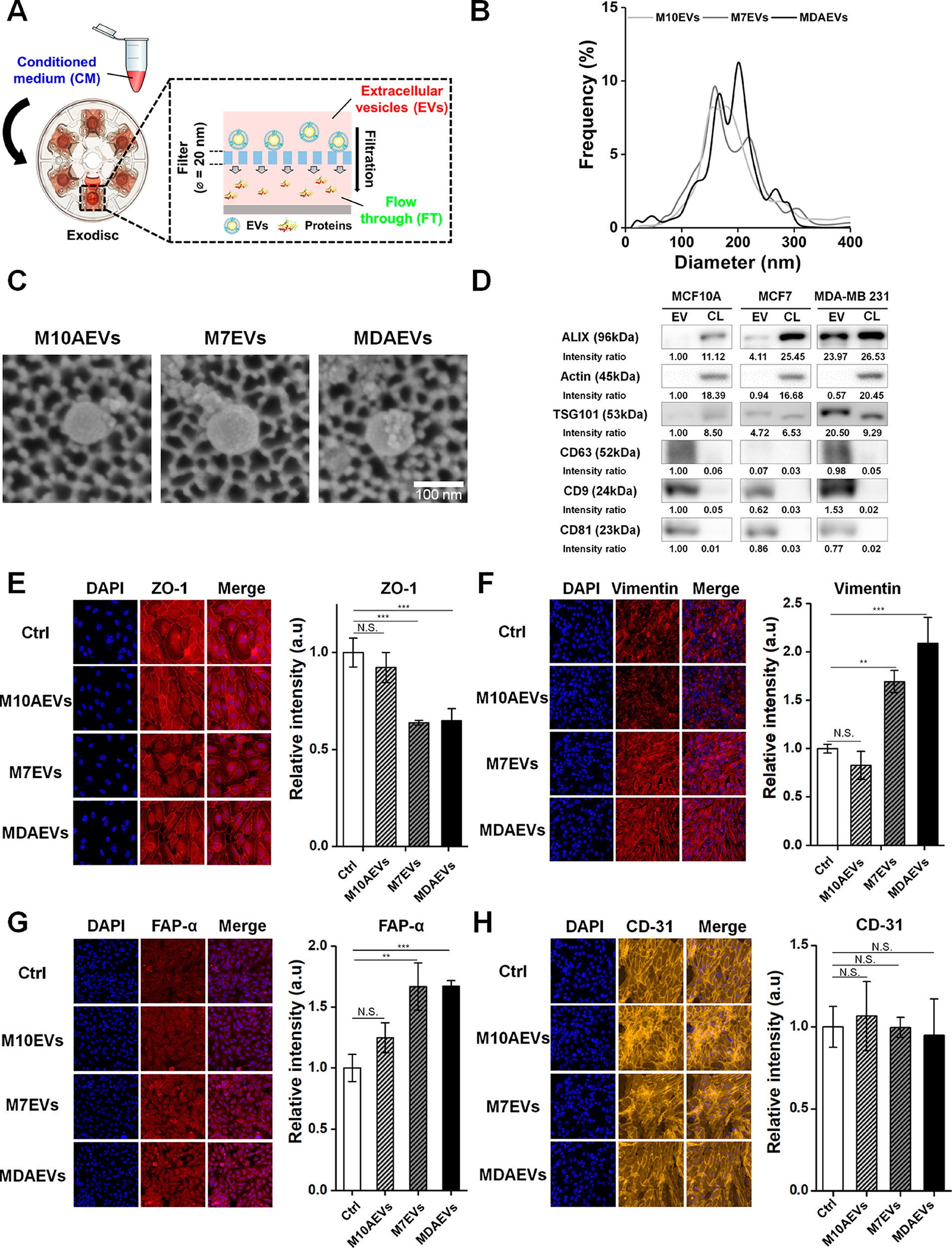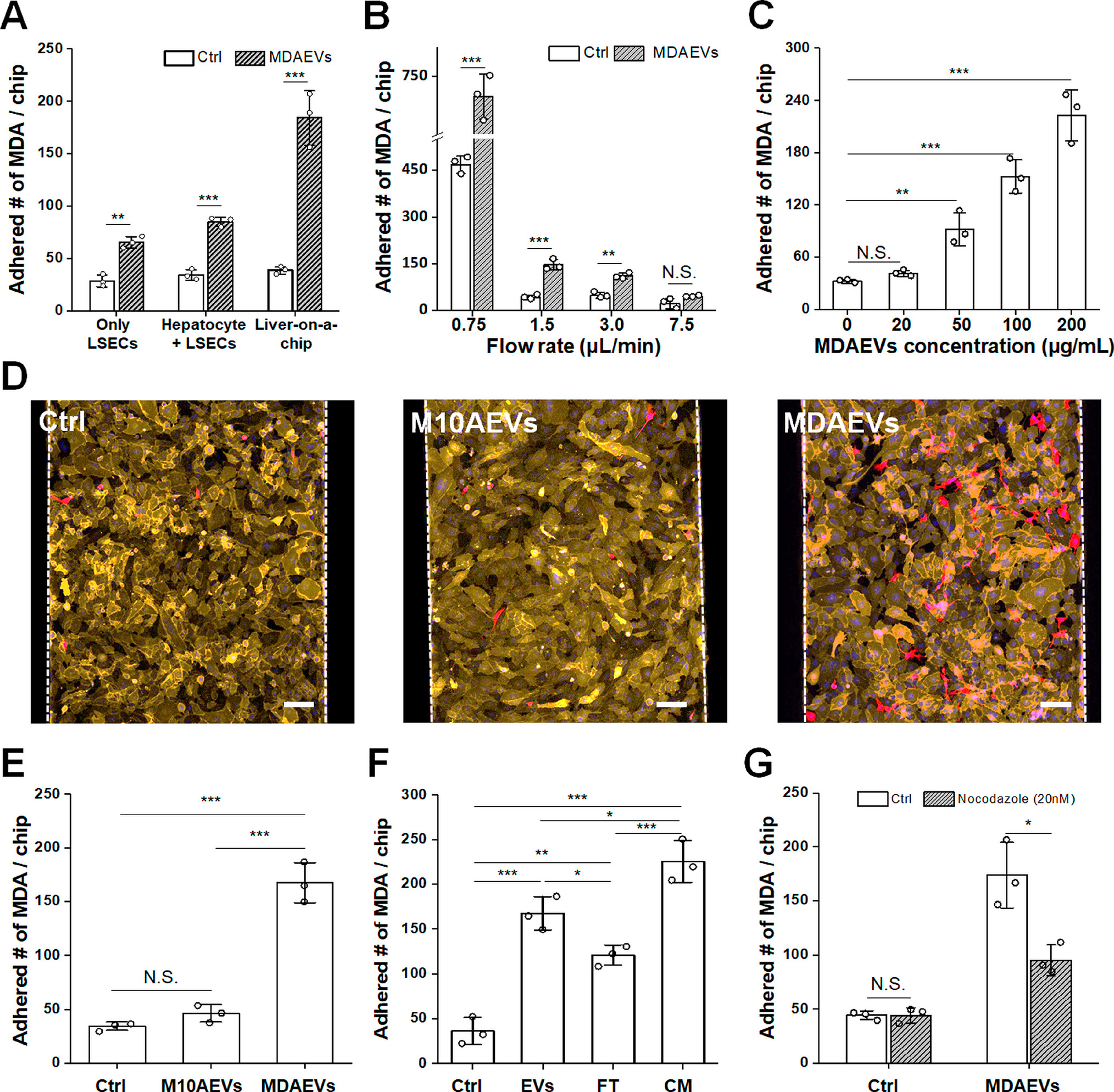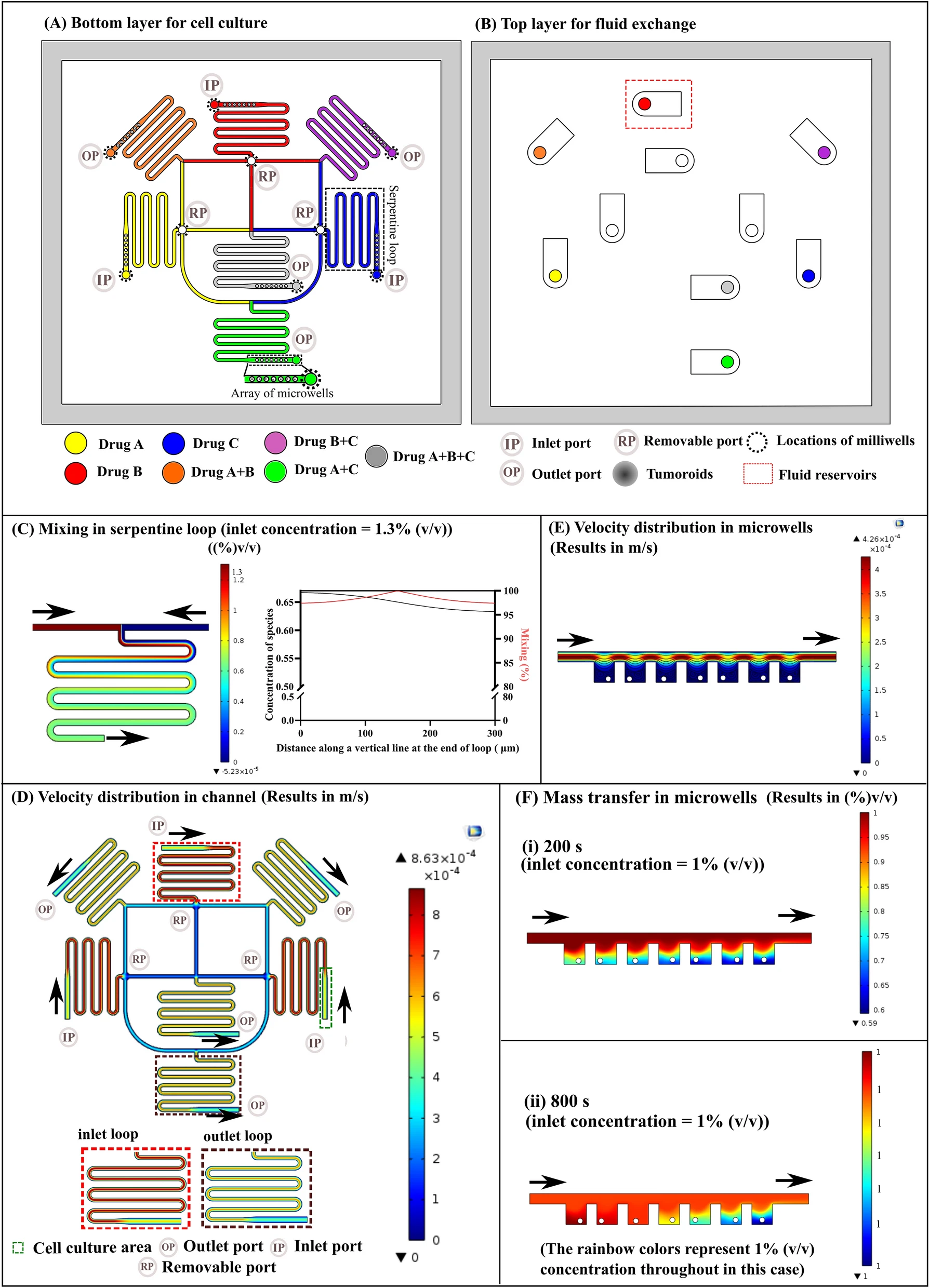
一种
Introduction
Microfluidic Human Liver-Chip Recapitulates the In Vivo Liver Microenvironment

- (A)
- (B)
- (C)
- (D)
- (E)
- (F)
- (G)
Breast Cancer-Derived EVs Activate LSECs in the Liver Microenvironment

- (A)
- (B)
- (C)
- (D)
- (E)
- (F)
- (G)
- (H)
Breast Cancer-Derived EVs Increase Breast Cancer Cell Adhesion in the Liver Microenvironment

- (A)
- (B)
- (C)
- (D)
- (E)
- (F)
- (G)

- (A)
- (B)
TGFβ1 in Breast Cancer-Derived EVs Increase Tumor Adhesion in the Liver Microenvironment

- (A)
- (B)
- (C)
- (D)
TGFβ1-Containing EVs Increases Breast Cancer Cell Adhesion by Upregulating Fibronectin in LSECs

- (A)
- (B)
- (C)
- (D)
- (E)
- (F)
EVs from the Blood of Breast Cancer Patients with Liver Metastases Contains Higher TGFβ1 Levels and Increased Adhesion of Breast Cancer Cells to the 3D Human Liver-Chip

- (A)
- (B)
- (C)
- (D)
- (E)
Conclusion
Reference
Kim J, Lee C, Kim I, et al. Three-Dimensional Human Liver-Chip Emulating Premetastatic Niche Formation by Breast Cancer-Derived Extracellular Vesicles[J]. ACS Nano, 2020, 14(11): 14971–14988.




